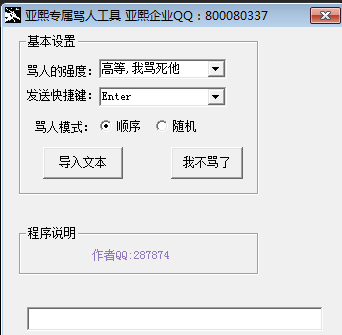数据库试题
时间:2022-03-15 08:44
1 、 用 两 种 方 式 根 据 部 门 号 从 高 到 低 , 工 资 从 低 到 高 列 出 每 个 员 工 的 信 息 。
employee:
eid,ename,salary,deptid;
select * from employeeorder by deptid
desc,salary
2 、 列 出 各 个 部 门 中 工 资 高 于 本 部 门 的 平 均 工 资 的 员 工 数 和 部 门 号 , 并 按 部 门 号
排 序
创建表:
mysql> createtable employee921(id int primary
key auto_increment,name
varchar(5
0),salary bigint,deptid int);
插入实验数据:
mysql> insert into
employee921values(null,‘zs‘,1000,1),(null,‘ls‘,1100,1),(null
,‘ww‘,1100,1),(null,‘zl‘,900,1)
,(null,‘zl‘,1000,2), (null,‘zl‘,900,2),(null,‘z
l‘,1000,2) , (null,‘zl‘,1100,2);
编写 sql 语句:
()select avg(salary) from
employee921 group by deptid;
()mysql>
selectemployee921.id,employee921.name,employee921.salary,employee921.dep
tid tid from employee921where salary >
(select avg(salary) from employee921 where
deptid = tid);
效率低的一个语句,仅供学习参考使用(在
group by 之后不能使用 where,只能使用
having,在
group by 之前可以使用
where,即表示对过滤后的结果分组):
mysql>
selectemployee921.id,employee921.name,employee921.salary,employee921.dep
tid tid from employee921where salary >
(select avg(salary) from employee921 group by
deptid havingdeptid = tid);
()select count(*) ,tid
from (
selectemployee921.id,employee921.name,employee921.salary,employee921.deptid
tid
from employee921
where salary>
(selectavg(salary) from employee921 where deptid
= tid)
) as t
group by tid ;
另外一种方式:关联查询
select a.ename,a.salary,a.deptid
from emp a,
(selectdeptd,avg(salary) avgsal from emp group
by deptid ) b
where a.deptid=b.deptidand a.salary>b.avgsal;
3 、 存 储 过 程 与 触 发 器 必 须 讲 , 经 常 被 面 试 到?
create procedure insert_Student (_name
varchar(50),_age int ,out_id int)
begin
insert into studentvalue(null,_name,_age);
select max(stuId)into _id from student;
end;
call insert_Student(‘wfz‘,23,@id);
select @id;
mysql> create trigger update_Student BEFORE
update on studentFOR EACH ROW
-> select * from student;
触发器不允许返回结果
create trigger update_StudentBEFORE update on
student FOR EACH ROW
insert into student value(null,‘zxx‘,28);
mysql 的触发器目前不能对当前表进行操作
create trigger update_StudentBEFORE update on
student FOR EACH ROW
delete from articles where id=8;
这个例子不是很好,最好是用删除一个用户时,顺带删除该用户的所有帖子
这里要注意使用 OLD.id
触发器用处还是很多的,比如校内网、开心网、Facebook,你发一个日志,自动通知好友,
其实就是在增加日志时做一个后触发,再向通知表中写入条目。因为触发器效率高。而
UCH
没有用触发器,效率和数据处理能力都很低。
存储过程的实验步骤:
mysql> delimiter |
mysql> create procedure
insertArticle_Procedure (pTitle varchar(50),pBid int,out
pId int)
-> begin
-> insert into
article1value(null,pTitle,pBid);
-> select max(id) into pId fromarticle1;
-> end;
-> |
Query OK, 0 rows affected (0.05sec)
mysql> callinsertArticle_Procedure(‘传智播客‘,1,@pid);
-> |
Query OK, 0 rows affected (0.00sec)
mysql> delimiter ;
mysql> select @pid;
+------+
| @pid |
+------+
| 3 |
+------+
1 row in set (0.00 sec)
mysql> select * fromarticle1;
+----+--------------+------+
| id | title | bid |
+----+--------------+------+
| 1 | test | 1 |
| 2 | chuanzhiboke | 1 |
| 3 | 传智播客
| 1 |
+----+--------------+------+
3 rows in set (0.00 sec)
触发器的实验步骤:
create table board1(id intprimary key
auto_increment,name varchar(50),ar
ticleCount int);
create table article1(id intprimary key
auto_increment,title varchar(50)
,bid int referencesboard1(id));
delimiter |
create triggerinsertArticle_Trigger after insert
on article1 for each ro
w begin
-> update board1
setarticleCount=articleCount+1 where id= NEW.bid;
-> end;
-> |
delimiter ;
insert into board1 value(null,‘test‘,0);
insert into article1value(null,‘test‘,1);
还有,每插入一个帖子,都希望将版面表中的最后发帖时间,帖子总数字段进行同步更新,
用触发器做效率就很高。下次课设计这样一个案例,写触发器时,对于最后发帖时间可能需
要用 declare 方式声明一个变量,或者是用 NEW.posttime 来生成。
4 、 数 据 库 三 范 式 是 什 么?
第一范式(1NF):字段具有原子性,不可再分。所有关系型数据库系统都满足第一范式)
数据库表中的字段都是单一属性的,不可再分。例如,姓名字段,其中的姓和名必
须作为一个整体,无法区分哪部分是姓,哪部分是名,如果要区分出姓和名,必须设计成两
个独立的字段。
第二范式(2NF):
第二范式(2NF)是在第一范式(1NF)的基础上建立起来的,即满足第二范式(2NF)必
须先满足第一范式(1NF)。
要求数据库表中的每个实例或行必须可以被惟一地区分。通常需要为表加上一个列,以存储
各个实例的惟一标识。这个惟一属性列被称为主关键字或主键。
第二范式(2NF)要求实体的属性完全依赖于主关键字。所谓完全依赖是指不能存在仅依赖
主关键字一部分的属性,如果存在,那么这个属性和主关键字的这一部分应该分离出来形成
一个新的实体,新实体与原实体之间是一对多的关系。为实现区分通常需要为表加上一个列,
以存储各个实例的惟一标识。简而言之,第二范式就是非主属性非部分依赖于主关键字。
第三范式的要求如下:
满足第三范式(3NF)必须先满足第二范式(2NF)。简而言之,第三范式(3NF)要求一
个数据库表中不包含已在其它表中已包含的非主关键字信息。
所以第三范式具有如下特征:
1,每一列只有一个值
2,每一行都能区分。
3,每一个表都不包含其他表已经包含的非主关键字信息。
例如,帖子表中只能出现发帖人的
id,而不能出现发帖人的
id,还同时出现发帖人姓名,
否则,只要出现同一发帖人
id 的所有记录,它们中的姓名部分都必须严格保持一致,这就
是数据冗余。
5 、 说 出 一 些 数 据 库 优 化 方 面 的 经 验?
用 PreparedStatement 一般来说比 Statement 性能高:一个
sql 发给服务器去执行,涉及步
骤:语法检查、语义分析,编译,缓存
“inert into user values(1,1,1)”-à 二进制
“inert into user values(2,2,2)”-à 二进制
“inert into user values(?,?,?)”-à 二进制
有外键约束会影响插入和删除性能,如果程序能够保证数据的完整性,那在设计数据库时就
去掉外键。(比喻:就好比免检产品,就是为了提高效率,充分相信产品的制造商)
(对于 hibernate 来说,就应该有一个变化:empleyee->Deptment 对象,现在设计时就成
了 employeeàdeptid)
看 mysql 帮助文档子查询章节的最后部分,例如,根据扫描的原理,下面的子查询语句要
比第二条关联查询的效率高:
1. select e.name,e.salarywhere
e.managerid=(select id from employee where
name=‘zxx‘);
2. select e.name,e.salary,m.name,m.salary
fromemployees e,employees m where
e.managerid = m.id andm.name=‘zxx‘;
表中允许适当冗余,譬如,主题帖的回复数量和最后回复时间等
将姓名和密码单独从用户表中独立出来。这可以是非常好的一对一的案例哟!
sql 语句全部大写,特别是列名和表名都大写。特别是
sql 命令的缓存功能,更加需要统一
大小写,sql 语句 à 发给
oracle 服务器
à 语法检查和编译成为内部指令
à 缓存和执行指令。
根据缓存的特点,不要拼凑条件,而是用?和 PreparedStatment
还有索引对查询性能的改进也是值得关注的。
备注:下面是关于性能的讨论举例
4航班
3个城市
m*n
select * from flight,city where
flight.startcityid=city.cityidand city.name=‘beijing‘;
m + n
select * from flight where startcityid = (select
cityid fromcity where cityname=‘beijing‘);
select flight.id,‘beijing‘,flight.flightTime
from flight wherestartcityid = (select cityid from city
where cityname=‘beijing‘)
6 、union
和 和 union all 有 什 么 不 同?
假设我们有一个表 Student,包括以下字段与数据:
drop table student;
create table student
(
id int primary key,
name nvarchar2(50) not null,
score number not null
);
insert into student values(1,‘Aaron‘,78);
insert into student values(2,‘Bill‘,76);
insert into student values(3,‘Cindy‘,89);
insert into student values(4,‘Damon‘,90);
insert into student values(5,‘Ella‘,73);
insert into student values(6,‘Frado‘,61);
insert into student values(7,‘Gill‘,99);
insert into student values(8,‘Hellen‘,56);
insert into student values(9,‘Ivan‘,93);
insert into student values(10,‘Jay‘,90);
commit;
Union 和
Union All 的区别。
select *
from student
where id < 4
union
select *
from student
where id > 2 and id < 6
结果将是
1 Aaron 78
2 Bill 76
3 Cindy 89
4 Damon 90
5 Ella 73
如果换成 Union All 连接两个结果集,则返回结果是:
1 Aaron 78
2 Bill 76
3 Cindy 89
3 Cindy 89
4 Damon 90
5 Ella 73
可以看到,Union 和 Union All 的区别之一在于对重复结果的处理。
UNION 在进行表链接后会筛选掉重复的记录,所以在表链接后会对所产生的结果集进行排
序运算,删除重复的记录再返回结果。实际大部分应用中是不会产生重复的记录,最常见的
是过程表与历史表 UNION。如:
select * from gc_dfys
union
select * from ls_jg_dfys
这个 SQL 在运行时先取出两个表的结果,再用排序空间进行排序删除重复的记录,最
后返回结果集,如果表数据量大的话可能会导致用磁盘进行排序。
而 UNION ALL 只是简单的将两个结果合并后就返回。这样,如果返回的两个结果集中有
重复的数据,那么返回的结果集就会包含重复的数据了。
从效率上说,UNION ALL 要比 UNION 快很多,所以,如果可以确认合并的两个结果集
中不包含重复的数据的话,那么就使用
UNION ALL,
7. 分 页 语 句
取出 出 sql 表 中 第31
到40 的 记 录 ( 以 自 动 增长 长 ID 为 主 键 )
sql server 方案1:
selecttop 10 * from t where id not in (select
top 30 id from t order by id ) orde byid
sql server 方案2:
selecttop 10 * from t where id in (select top 40
id from t order by id) order by iddesc
mysql 方案:select
* from t order by idlimit 30,10
oracle 方案:select
* from (select rownum r,* from t where r<=40) wherer>30
--------------------待整理进去的内容-------------------------------------
pageSize=20;
pageNo = 5;
1.分页技术1(直接利用 sql 语句进行分页,效率最高和最推荐的)
mysql:sql = "select * from articles limit
" +(pageNo-1)*pageSize + "," + pageSize;
oracle: sql = "select * from " +
"(selectrownum r,* from " +
"(select* from
articles order by postime desc)" +
"whererownum<= " +
pageNo*pageSize +") tmp " +
"wherer>" +
(pageNo-1)*pageSize;
注释:第7行保证 rownum 的顺序是确定的,因为
oracle 的索引会造成
rownum 返回不同的
值
简洋提示:没有 order by 时,rownum 按顺序输出,一旦有了
order by,rownum
不按顺序
输出了,这说明 rownum 是排序前的编号。如果对 order by 从句中的字段建立了索引,那
么,rownum 也是按顺序输出的,因为这时候生成原始的查询结果集时会参照索引表的顺序
来构建。
sqlserver:sql = "select top 10 * from id
not id(select top" + (pageNo-1)*pageSize + "id from
articles)"
DataSource ds = new
InitialContext().lookup(jndiurl);
Connection cn = ds.getConnection();
//"select * from user where id=?"
--->binary directive
PreparedStatement pstmt =
cn.prepareSatement(sql);
ResultSet rs = pstmt.executeQuery()
while(rs.next())
{
out.println(rs.getString(1));
}
2.不可滚动的游标
pageSize=20;
pageNo = 5;
cn = null
stmt = null;
rs = null;
try
{
sqlserver:sql = "select * from
articles";
DataSource ds = new
InitialContext().lookup(jndiurl);
Connection cn = ds.getConnection();
//"select * from user where id=?"
--->binary directive
PreparedStatement pstmt =
cn.prepareSatement(sql);
ResultSet rs = pstmt.executeQuery()
for(int j=0;j<(pageNo-1)*pageSize;j++)
{
rs.next();
}
int i=0;
while(rs.next() && i<10)
{
i++;
out.println(rs.getString(1));
}
}
cacth(){}
finnaly
{
if(rs!=null)try{rs.close();}catch(Exceptione){}
if(stm.........
if(cn............
}
3.可滚动的游标
pageSize=20;
pageNo = 5;
cn = null
stmt = null;
rs = null;
try
{
sqlserver:sql = "select * from
articles";
DataSource ds = new
InitialContext().lookup(jndiurl);
Connection cn = ds.getConnection();
//"select * from user where id=?"
--->binary directive
PreparedStatement pstmt =
cn.prepareSatement(sql,ResultSet.TYPE_SCROLL_INSENSITIVE,...);
//根据上面这行代码的异常
SQLFeatureNotSupportedException,就可判断驱动是否支持可
滚动游标
ResultSet rs = pstmt.executeQuery()
rs.absolute((pageNo-1)*pageSize)
int i=0;
while(rs.next() && i<10)
{
i++;
out.println(rs.getString(1));
}
}
cacth(){}
finnaly
{
if(rs!=null)try{rs.close();}catch(Exceptione){}
if(stm.........
if(cn............
}
8. 用 一条 条
SQL 语 句 查 询 出 每 门 课 都 大 于80
分 的 学 生 姓 名
name kecheng fenshu
张三 语文 81
张三 数学 75
李四 语文 76
李四 数学 90
王五 语文 81
王五 数学 100
王五 英语 90
准备数据的 sql 代码:
create table score(id int primary key
auto_increment,namevarchar(20),subject
varchar(20),score int);
insert into score values
(null,‘张三‘,‘语文‘,81),
(null,‘张三‘,‘数学‘,75),
(null,‘李四‘,‘语文‘,76),
(null,‘李四‘,‘数学‘,90),
(null,‘王五‘,‘语文‘,81),
(null,‘王五‘,‘数学‘,100),
(null,‘王五
‘,‘英语‘,90);
提示:当百思不得其解时,请理想思维,把小变成大做,把大变成小做,
答案:
A: select distinct name from score where name
not in (selectdistinct name from score
where score<=80)
B:select distince name t1 from score where
80< all (selectscore from score where
name=t1);
9. 所 有 部 门 之 间 的 比 赛 组 合
一个叫 department 的表,里面只有一个字段 name,一共有4条纪录,分别是
a,b,c,d,对应四
个球对,现在四个球对进行比赛,用一条
sql 语句显示所有可能的比赛组合.
答:select a.name,b.name
from team a, team b
where a.name < b.name
10. 每 个 月 份 的 发 生 额 都 比101 科 目 多 的 科 目
请用 SQL 语句实现:从 TestDB 数据表中查询出所有月份的发生额都比101科目相应月份的
发生额高的科目。请注意:TestDB
中有很多科目,都有1-12月份的发生额。
AccID:科目代码,Occmonth:发生额月份,DebitOccur:发生额。
数据库名:JcyAudit,数据集:Select * from TestDB
准备数据的 sql 代码:
drop table if exists TestDB;
create table TestDB(id int primary key
auto_increment,AccIDvarchar(20), Occmonth date,
DebitOccur bigint);
insert into TestDB values
(null,‘101‘,‘1988-1-1‘,100),
(null,‘101‘,‘1988-2-1‘,110),
(null,‘101‘,‘1988-3-1‘,120),
(null,‘101‘,‘1988-4-1‘,100),
(null,‘101‘,‘1988-5-1‘,100),
(null,‘101‘,‘1988-6-1‘,100),
(null,‘101‘,‘1988-7-1‘,100),
(null,‘101‘,‘1988-8-1‘,100);
--复制上面的数据,故意把第一个月份的发生额数字改小一点
insert into TestDB values
(null,‘102‘,‘1988-1-1‘,90),
(null,‘102‘,‘1988-2-1‘,110),
(null,‘102‘,‘1988-3-1‘,120),
(null,‘102‘,‘1988-4-1‘,100),
(null,‘102‘,‘1988-5-1‘,100),
(null,‘102‘,‘1988-6-1‘,100),
(null,‘102‘,‘1988-7-1‘,100),
(null,‘102‘,‘1988-8-1‘,100);
--复制最上面的数据,故意把所有发生额数字改大一点
insert into TestDB values
(null,‘103‘,‘1988-1-1‘,150),
(null,‘103‘,‘1988-2-1‘,160),
(null,‘103‘,‘1988-3-1‘,180),
(null,‘103‘,‘1988-4-1‘,120),
(null,‘103‘,‘1988-5-1‘,120),
(null,‘103‘,‘1988-6-1‘,120),
(null,‘103‘,‘1988-7-1‘,120),
(null,‘103‘,‘1988-8-1‘,120);
--复制最上面的数据,故意把所有发生额数字改大一点
insert into TestDB values
(null,‘104‘,‘1988-1-1‘,130),
(null,‘104‘,‘1988-2-1‘,130),
(null,‘104‘,‘1988-3-1‘,140),
(null,‘104‘,‘1988-4-1‘,150),
(null,‘104‘,‘1988-5-1‘,160),
(null,‘104‘,‘1988-6-1‘,170),
(null,‘104‘,‘1988-7-1‘,180),
(null,‘104‘,‘1988-8-1‘,140);
--复制最上面的数据,故意把第二个月份的发生额数字改小一点
insert into TestDB values
(null,‘105‘,‘1988-1-1‘,100),
(null,‘105‘,‘1988-2-1‘,80),
(null,‘105‘,‘1988-3-1‘,120),
(null,‘105‘,‘1988-4-1‘,100),
(null,‘105‘,‘1988-5-1‘,100),
(null,‘105‘,‘1988-6-1‘,100),
(null,‘105‘,‘1988-7-1‘,100),
(null,‘105‘,‘1988-8-1‘,100);
答案:
select distinct AccID from TestDB
where AccID not in
(selectTestDB.AccIDfrom TestDB,
(select * from TestDB where AccID=‘101‘) asdb101
whereTestDB.Occmonth=db101.Occmonth and
TestDB.DebitOccur<=db101.DebitOccur
);
11. 统 计 每 年 每 月 的 信 息
year monthamount
1991 1 1.1
1991 2 1.2
1991 3 1.3
1991 4 1.4
1992 1 2.1
1992 2 2.2
1992 3 2.3
1992 4 2.4
查成这样一个结果
year m1 m2 m3 m4
1991 1.1 1.2 1.3 1.4
1992 2.1 2.2 2.3 2.4
提示:这个与工资条非常类似,与学生的科目成绩也很相似。
准备 sql 语句:
drop table if existssales;
create table sales(idint auto_increment primary
key,year varchar(10), month varchar(10),
amountfloat(2,1));
insert into salesvalues
(null,‘1991‘,‘1‘,1.1),
(null,‘1991‘,‘2‘,1.2),
(null,‘1991‘,‘3‘,1.3),
(null,‘1991‘,‘4‘,1.4),
(null,‘1992‘,‘1‘,2.1),
(null,‘1992‘,‘2‘,2.2),
(null,‘1992‘,‘3‘,2.3),
(null,‘1992‘,‘4‘,2.4);
答案一、
select sales.year ,
(select t.amount fromsales t where t.month=‘1‘
and t.year= sales.year) ‘1‘,
(select t.amount fromsales t where t.month=‘1‘
and t.year= sales.year) ‘2‘,
(select t.amount fromsales t where t.month=‘1‘
and t.year= sales.year) ‘3‘,
(select t.amount fromsales t where t.month=‘1‘
and t.year= sales.year) as ‘4‘
from sales group by year;
12. 显 示 文 章 标 题 , 发 帖 人 、 最 后 回 复 时 间
表:id,title,postuser,postdate,parentid
准备 sql 语句:
drop table if exists articles;
create table articles(id int auto_increment
primary key,titlevarchar(50), postuser
varchar(10), postdate datetime,parentid int
referencesarticles(id));
insert into articles values
(null,‘第一条‘,‘张三‘,‘1998-10-10 12:32:32‘,null),
(null,‘第二条‘,‘张三‘,‘1998-10-10 12:34:32‘,null),
(null,‘第一条回复1‘,‘李四‘,‘1998-10-10 12:35:32‘,1),
(null,‘第二条回复1‘,‘李四‘,‘1998-10-10 12:36:32‘,2),
(null,‘第一条回复2‘,‘王五‘,‘1998-10-10 12:37:32‘,1),
(null,‘第一条回复3‘,‘李四‘,‘1998-10-10 12:38:32‘,1),
(null,‘第二条回复2‘,‘李四‘,‘1998-10-10 12:39:32‘,2),
(null,‘第一条回复4‘,‘王五‘,‘1998-10-10 12:39:40‘,1);
答案:
select a.title,a.postuser,
(selectmax(postdate) from articles where
parentid=a.id) reply
from articles a where a.parentid is null;
注释:子查询可以用在选择列中,也可用于
where 的比较条件中,还可以用于
from 从句中。
13. 删 除 除了 了 id 号 不 同,
其 他 都 相 同 的 学 生 冗 余 信 息
2.学生表如下:
id 号 学号 姓名课程编号课程名称分数
1 2005001 张三
0001 数学
69
2 2005002 李四
0001 数学
89
3 2005001 张三
0001 数学
69
A: delete from tablename where id 号 not in(select min(id 号)
from tablename group by 学
号,姓名,课程编号,课程名称,分数)
实验:
create table student2(id int auto_increment
primary key,codevarchar(20),name
varchar(20));
insert into student2 values(null,‘2005001‘,‘张三‘),(null,‘2005002‘,‘李四‘),(null,‘2005001‘,‘张
三‘);
//如下语句,mysql
报告错误,可能删除依赖后面统计语句,而删除又导致统计语句结果不
一致。
delete from student2 where id not in(select
min(id) fromstudent2 group by name);
//但是,如下语句没有问题:
select * from student2where id not in(select
min(id) from student2 group by name);
//于是,我想先把分组的结果做成虚表,然后从虚表中选出结果,最后再将结果作为删除的
条件数据。
delete from student2 where id not in(select mid
from (selectmin(id) mid
from student2 group by name) as t);
或者:
delete from student2 where id not in(select
min(id) from (select* from s
tudent2) as t group by t.name);
14. 航 空 网 的 几 个 航 班 查 询 题 :
表结构如下:
flight{flightID,StartCityID
,endCityID,StartTime}
city{cityID, CityName)
实验环境:
create table city(cityID int auto_increment
primary key,cityNamevarchar(20));
create table flight (flightID int auto_increment
primary key,
StartCityID intreferences city(cityID),
endCityID int references city(cityID),
StartTimetimestamp);
//航班本来应该没有日期部分才好,但是下面的题目当中涉及到了日期
insert into city values(null,‘北京‘),(null,‘上海‘),(null,‘广州‘);
insert into flight values
(null,1,2,‘9:37:23‘),(null,1,3,‘9:37:23‘),(null,1,2,‘10:37:23‘),(null,2,3,‘10:37:23‘);
1、查询起飞城市是北京的所有航班,按到达城市的名字排序
参与运算的列是我起码能够显示出来的那些列,但最终我不一定把它们显示出来。各个表组
合出来的中间结果字段中必须包含所有运算的字段。
select * from flight f,city c
where f.endcityid =c.cityid and startcityid =
(select c1.cityidfrom city c1 where c1.cityname
= "北京")
order by c.citynameasc;
mysql> select flight.flightid,‘北京‘ startcity, e.cityname from flight,city e wh
ere flight.endcityid=e.cityid and
flight.startcityid=(selectcityid from city wh
ere cityname=‘北京‘);
mysql> select
flight.flightid,s.cityname,e.cityname fromflight,city s,city e wh
ere flight.startcityid=s.cityid and s.cityname=‘北京‘ andflight.endCityId=e.cit
yID order by e.cityName desc;
2、查询北京到上海的所有航班纪录(起飞城市,到达城市,起飞时间,航班号)
select
c1.CityName,c2.CityName,f.StartTime,f.flightID
from city c1,city c2,flight f
where f.StartCityID=c1.cityID
and f.endCityID=c2.cityID
and c1.cityName=‘北京‘
and c2.cityName=‘上海‘
3、查询具体某一天(2005-5-8)的北京到上海的的航班次数
select count(*) from
(select
c1.CityName,c2.CityName,f.StartTime,f.flightID
from city c1,city c2,flight f
where f.StartCityID=c1.cityID
and f.endCityID=c2.cityID
and c1.cityName=‘北京‘
and c2.cityName=‘上海‘
and 查帮助获得的某个日期处理函数(startTime)
like ‘2005-5-8%‘
mysql 中提取日期部分进行比较的示例代码如下:
select * from flight
wheredate_format(starttime,‘%Y-%m-%d‘)=‘1998-01-02‘
15. 查 出 比 经 理 薪 水 还 高 的 员 工 信 息 :
Drop table if not exists employees;
create table employees(id int primary key
auto_increment,namevarchar(50)
,salary int,managerid intreferences
employees(id));
insert into employees values (null,‘
lhm‘,10000,null), (null,‘zxx‘,15000,1
),(null,‘flx‘,9000,1),(null,‘tg‘,10000,2),(null,‘wzg‘,10000,3);
Wzg 大于
flx,lhm 大于
zxx
解题思路:
根据 sql 语句的查询特点,是逐行进行运算,不可能两行同时参与运算。
涉及了员工薪水和经理薪水,所有,一行记录要同时包含两个薪水,所有想到要把这个表自
关联组合一下。
首先要组合出一个包含有各个员工及该员工的经理信息的长记录,譬如,左半部分是
员工,右半部分是经理。而迪卡尔积会组合出很多垃圾信息,先去除这些垃圾信息。
select e.* from employees e,employees m where
e.managerid=m.idand e.sala
ry>m.salary;
16 、 求 出 小 于45
岁 的 各 个 老 师 所 带 的 大 于12
岁 的 学 生 人 数
数据库中有3个表 teacher 表,student
表,tea_stu 关系表。
teacher 表
teaID name age
student 表
stuID name age
teacher_student 表 teaID stuID
要求用一条 sql 查询出这样的结果
1.显示的字段要有老师
name, age 每个老师所带的学生人数
2 只列出老师
age 为40以下,学生 age 为12以上的记录
预备知识:
1.sql 语句是对每一条记录依次处理,条件为真则执行动作
(select,insert,delete,update)
2.只要是迪卡尔积,就会产生“垃圾”信息,所以,只要迪卡尔积了,我们首先就要
想到清除“垃圾”信息
实验准备:
drop table if exists tea_stu;
drop table if exists teacher;
drop table if exists student;
create table teacher(teaID int primarykey,name
varchar(50),age int);
create table student(stuID int primarykey,name
varchar(50),age int);
create table tea_stu(teaID int
referencesteacher(teaID),stuID int references
student(stuID));
insertinto teacher values(1,‘zxx‘,45),
(2,‘lhm‘,25) , (3,‘wzg‘,26) , (4,‘tg‘,27);
insertinto student values(1,‘wy‘,11),
(2,‘dh‘,25) , (3,‘ysq‘,26) , (4,‘mxc‘,27);
insertinto tea_stu values(1,1), (1,2), (1,3);
insertinto tea_stu values(2,2), (2,3), (2,4);
insert into tea_stu values(3,3), (3,4), (3,1);
insertinto tea_stu values(4,4), (4,1), (4,2) , (4,3);
结果:2à3,3à2,4à3
解题思路:(真实面试答题时,也要写出每个分析步骤,如果纸张不够,就找别人要)
1要会统计分组信息,统计信息放在中间表中:
selectteaid,count(*) from tea_stu group by
teaid;
2接着其实应该是筛除掉小于12岁的学生,然后再进行统计,中间表必须与 student 关联才
能得到12岁以下学生和把该学生记录从中间表中剔除,代码是:
selecttea_stu.teaid,count(*) total from student,tea_stu
wherestudent.stuid=tea_stu.stuid and
student.age>12 group by tea_stu.teaid
3.接着把上面的结果做成虚表与
teacher 进行关联,并筛除大于45的老师
selectteacher.teaid,teacher.name,total from
teacher ,(select tea_stu.tea
id,count(*)total from student,tea_stu where
student.stuid=tea_stu.stuid and stu
dent.age>12group by tea_stu.teaid) as
tea_stu2where teacher.teaid=tea_stu2.tea
idand teacher.age<45;
17. 求 出 发 帖 最 多 的 人 :
select authorid,count(*) total from articles
group by authorid
having total=
(select max(total2) from(select count(*) total2
from articles group by authorid) as t);
select t.authorid,max(t.total) from
(select authorid,count(*)
total from articles)as
t
这条语句不行,因为 max 只有一列,不能与其他列混淆。
select authorid,count(*) total from articles
group by authorid having total=max(total)也不行。
18 、 一 个 用 户 表 中 有 一 个 积 分 字 段 , 假 如 数 据 库 中 有100 多 万 个 用 户 , 若 要 在 每
年 第 一 天 凌 晨 将 积 分 清 零 , 你 将 考 虑 什 么 , 你 将 想 什 么 办 法 解 决?
alter table drop column score;
alter table add colunm score int;
可能会很快,但是需要试验,试验不能拿真实的环境来操刀,并且要注意,
这样的操作时无法回滚的,在我的印象中,只有
inert update delete 等
DML 语句才能回滚,
对于 create table,drop table
,alter table 等
DDL 语句是不能回滚。
解决方案一,update user set score=0;
解决方案二,假设上面的代码要执行好长时间,超出我们的容忍范围,那我就
alter table user
drop columnscore;alter table user add column
score int。
下面代码实现每年的那个凌晨时刻进行清零。
Runnable runnable =
new Runnable(){
public voidrun(){
clearDb();
schedule(this,newDate(new
Date().getYear()+1,0,0));
}
};
schedule(runnable,
new Date(newDate().getYear()+1,0,1));
19 、 一 个 用 户 具 有 多 个 角 色 , 请 查 询 出 该 表 中 具 有 该 用 户 的 所 有 角 色 的 其 他 用
户 。
select count(*) as num,tb.id
from
tb,
(select role from tbwhere id=xxx) as t1
where
tb.role = t1.role andtb.id != t1.id
group by tb.id
having
num = select count(role)from tb where id=xxx;
20. xxx 公 司的 的
sql 面 试
Table EMPLOYEES Structure:
EMPLOYEE_ID NUMBER Primary Key,
FIRST_NAME VARCHAR2(25),
LAST_NAME VARCHAR2(25),
Salary number(8,2),
HiredDate DATE,
Departmentid number(2)
TableDepartments Structure:
Departmentid number(2) Primary Key,
DepartmentName VARCHAR2(25).
(2)基于上述
EMPLOYEES 表写出查询:写出雇用日期在今年的,或者工资在[1000,2000]
之间的,或者员工姓名(last_name)以’Obama’打头的所有员工,列出这些员工的全部个
人信息。(4分)
select* from employees
whereYear(hiredDate) = Year(date())
or (salary between 1000 and 200)
or left(last_name,3)=‘abc‘;
(3) 基于上述
EMPLOYEES 表写出查询:查出部门平均工资大于1800元的部门的所有员工,
列出这些员工的全部个人信息。(4分)
mysql>select id,name,salary,deptid did from
employee1 where (select avg(salary)
from employee1 where deptid = did) > 1800;
(4) 基于上述
EMPLOYEES 表写出查询:查出个人工资高于其所在部门平均工资的员工,
列出这些员工的全部个人信息及该员工工资高出部门平均工资百分比。(5分)
selectemployee1.*,(employee1.salary-t.avgSalary)*100/employee1.salary
fromemployee1,
(select deptid,avg(salary) avgSalary
fromemployee1 group by deptid) as t
whereemployee1.deptid = t.deptid and
employee1.salary>t.avgSalary;
21 、 注册 册
Jdbc 驱 动 程 序 的 三 种 方 式
22 、用 用 JDBC 如 何 调 用 存 储 过 程
代 码 如 下 :
package com.huawei.interview.lym;
import java.sql.CallableStatement;
import java.sql.Connection;
import java.sql.DriverManager;
import java.sql.SQLException;
import java.sql.Types;
publicclass JdbcTest {
/**
* @paramargs
*/
public static voidmain(String[] args) {
// TODO Auto-generated method stub
Connection cn = null;
CallableStatement cstmt =null;
try {
//这里最好不要这么干,因为驱动名写死在程序中了
Class.forName("com.mysql.jdbc.Driver");
//实际项目中,这里应用
DataSource 数据,如果用框架,
//这个数据源不需要我们编码创建,我们只需
Datasource ds =context.lookup()
//cn = ds.getConnection();
cn =
DriverManager.getConnection("jdbc:mysql:///test","root","root");
cstmt =
cn.prepareCall("{callinsert_Student(?,?,?)}");
cstmt.registerOutParameter(3,Types.INTEGER);
cstmt.setString(1,"wangwu");
cstmt.setInt(2, 25);
cstmt.execute();
//get 第几个,不同的数据库不一样,建议不写
System.out.println(cstmt.getString(3));
} catch (Exception e) {
// TODO Auto-generated catchblock
e.printStackTrace();
}
finally
{
/*try{cstmt.close();}catch(Exceptione){}
try{cn.close();}catch(Exceptione){}*/
try {
if(cstmt !=null)
cstmt.close();
if(cn !=null)
cn.close();
} catch (SQLException e) {
// TODO Auto-generatedcatch block
e.printStackTrace();
}
}
}
23 、JDBC
中的 的 PreparedStatement 相比 比 Statement 的 好 处
答:一个 sql 命令发给服务器去执行的步骤为:语法检查,语义分析,编译成内部指令,缓
存指令,执行指令等过程。
select * from student where id =3----缓存--àxxxxx 二进制命令
select * from student where id =3----直接取-àxxxxx 二进制命令
select * from student where id =4--- -à 会怎么干?
如果当初是 select * from student
where id =?--- -à 又会怎么干?
上面说的是性能提高
可以防止 sql 注入。
24. 写 一 个用 用 jdbc 连 接 并 访问 问
oracle 数 据 的 程 序 代 码
25 、Class.forName
的 作 用?
为 什 么 要 用?
答:按参数中指定的字符串形式的类名去搜索并加载相应的类,如果该类字节码已经被加载
过,则返回代表该字节码的
Class 实例对象,否则,按类加载器的委托机制去搜索和加载该
类,如果所有的类加载器都无法加载到该类,则抛出
ClassNotFoundException。加载完这
个 Class 字节码后,接着就可以使用 Class 字节码的 newInstance 方法去创建该类的实例
对象了。
有时候,我们程序中所有使用的具体类名在设计时(即开发时)无法确定,只有程序运行时
才能确定,这时候就需要使用
Class.forName 去动态加载该类,这个类名通常是在配置文
件中配置的,例如,spring 的 ioc 中每次依赖注入的具体类就是这样配置的,jdbc
的驱动类
名通常也是通过配置文件来配置的,以便在产品交付使用后不用修改源程序就可以更换驱动
类名。
26 、 大 数 据 量 下 的 分 页 解 决 方 法 。
答:最好的办法是利用 sql 语句进行分页,这样每次查询出的结果集中就只包含某页的数据
内容。再 sql 语句无法实现分页的情况下,可以考虑对大的结果集通过游标定位方式来获取
某页的数据。
sql 语句分页,不同的数据库下的分页方案各不一样,下面是主流的三种数据库的分页
sql:
sql server:
String sql =
"select top" + pageSize + " *
from students where id not in" +
"(select top "+ pageSize *
(pageNumber-1) + " id from students order by id)" +
"order by id";
mysql:
String sql =
"select * fromstudents order by id limit
" + pageSize*(pageNumber-1) + ","
+pageSize;
oracle:
String sql =
"select * from " +
(select *,rownum rid from (select * fromstudents
order by postime desc) where
rid<=" + pagesize*pagenumber +") as
t" +
"where t>"
+pageSize*(pageNumber-1);
27 、 用 JDBC 查 询 学 生 成 绩 单,
把 主 要 代 码 写 出 来 ( 考 试 概 率 极 大 ).
Connection cn = null;
PreparedStatement pstmt =null;
Resultset rs = null;
try
{
Class.forname(driveClassName);
cn =
DriverManager.getConnection(url,username,password);
pstmt =cn.prepareStatement(“select score.*
fromscore ,student “ +
“wherescore.stuId = student.id and student.name
= ?”);
pstmt.setString(1,studentName);
Resultset rs =pstmt.executeQuery();
while(rs.next())
{
system.out.println(rs.getInt(“subject”) + “ ” +
rs.getFloat(“score”) );
}
}catch(Exception e){e.printStackTrace();}
finally
{
if(rs != null) try{rs.close() }catch(exception
e){}
if(pstmt !=
null)try{pstmt.close()}catch(exception e){}
if(cn != null) try{cn.close() }catch(exception
e){}
}
28 、 这 段 代 码 有 什 么 不 足 之 处?
try {
Connection conn = ...;
Statement stmt = ...;
ResultSet rs =stmt.executeQuery("select *
from table1");
while(rs.next()) {
}
} catch(Exception ex) {
}
答:没有 finally 语句来关闭各个对象,另外,使用 finally 之后,要把变量的定义放在 try 语
句块的外面,以便在 try 语句块之外的
finally 块中仍可以访问这些变量。
29 、 说 出 数 据 连 接 池 的 工 作 机 制 是 什 么?
J2EE 服务器启动时会建立一定数量的池连接,并一直维持不少于此数目的池连接。客户端
程序需要连接时,池驱动程序会返回一个未使用的池连接并将其表记为忙。如果当前没有空
闲连接,池驱动程序就新建一定数量的连接,新建连接的数量有配置参数决定。当使用的池
连接调用完成后,池驱动程序将此连接表记为空闲,其他调用就可以使用这个连接。
实现方式,返回的 Connection 是原始
Connection 的代理,代理 Connection 的
close 方法
不是真正关连接,而是把它代理的
Connection 对象还回到连接池中。
30 、 为 什 么 要 用
ORM? 和 JDBC 有 何 不 一 样?
orm 是一种思想,就是把
object 转变成数据库中的记录,或者把数据库中的记录转变成
objecdt,我们可以用
jdbc 来实现这种思想,其实,如果我们的项目是严格按照
oop 方式编
写的话,我们的 jdbc 程序不管是有意还是无意,就已经在实现
orm 的工作了。
现在有许多 orm 工具,它们底层调用
jdbc 来实现了 orm 工作,我们直接使用这些工具,就
省去了直接使用 jdbc 的繁琐细节,提高了开发效率,现在用的较多的
orm 工具是 hibernate。
也听说一些其他 orm 工具,如
toplink,ojb 等。



























